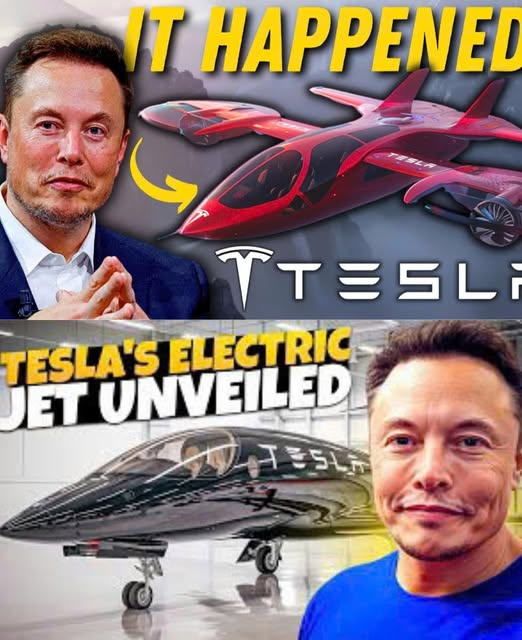
Elon Musk has revolutionized Earth’s highways with Tesla and set his sights on the stars with SpaceX. But now, in a bold new chapte he’s targeting the skies that lie between. The long-teased dream of a Tesla electric planefirst hinted at during a 2017 TED Talk—is gaining altitude, and with the latest advances in battery technology and aerospace design, it could soon become a reality.
If successful, this airborne EV would make Musk the undisputed monarch of modern transportation owning the roads, space, and now the skies.
A New Frontier for Tesla
For years, Musk has mused about a vertical takeoff and landing (VTOL) electric aircraft that could carry passengers between cities with zero emissions and minimal noise. But what once sounded like science fiction may now be within reach. Tesla’s deep dive into sodium-ion battery technology in 2023, as reported by TechCrunch, is a potential game-changer.
Unlike traditional lithium-ion batteries, sodium-based cells are cheaper, more environmentally friendly, and critically lighter. For aviation, where every kilogram counts, this innovation could crack the code that’s long stalled electric flight.
“An electric plane is doable if you’ve got an energy density of around 400 watt-hours per kilogram,” Musk once said. “With advancements in battery chemistry, we’re approaching that threshold.”
A Tesla Cockpit in the Clouds
What might a Tesla plane look like? If the automaker’s aesthetic holds, expect a sleek, minimalist fuselage, zero emissions, and a futuristic touchscreen cockpit powered by AI. Leaks and speculative renders on X (formerly Twitter) suggest a cabin where pilots—or even autopilot—can control flight systems with a swipe, similar to Tesla’s Model S.
Think 500-mile city-to-city hops: New York to Boston, LA to San Francisco. Quiet, clean, fast, and elegant—Musk’s plane isn’t meant to compete with jumbo jets but to replace inefficient short-haul flights that guzzle fuel and clog airports.
The Battery Barrier And Breakthrough?
The biggest challenge for any electric plane is energy density—fitting enough power into a small, lightweight frame. But with Tesla’s ongoing battery R&D, plus its massive Gigafactory network, the company could mass-produce lightweight batteries tailored for flight.
Musk’s recent hints about 4680 battery scaling and “next-generation energy storage” add fuel to the speculation. And with Tesla now vertically integrated across powertrains, AI, and materials, the company might be uniquely positioned to build an aircraft from scratch not retrofit old ones.
Green Sky, Bold Vision
This isn’t just about another cool vehicle. A Tesla plane would reinforce Musk’s green mission: a zero-emission transportation network that spans land, air, and even orbit. It’s the kind of synergy that could create cross-platform loyalty imagine booking a Tesla plane ride through your Tesla car dashboard.
Still, critics warn that commercializing electric flight won’t be simple. Regulatory hurdles, battery safety in the air, and infrastructure for charging and maintenance are huge obstacles. But if anyone can push through the noise, it’s Musk—whose track record of defying industry norms includes reusable rockets and EVs that outpace Ferraris.
Altitude Meets Ambition
Elon Musk is no stranger to bold ideas. But while Starship reaches for the stars, the Tesla electric plane could redefine our daily travel. It’s not about colonizing Mars—it’s about decarbonizing the distance between cities. No traffic, no emissions, no roar—just a silent hum above the clouds.
If the past is any guide, the road—or rather, the sky—to innovation will be bumpy. But with Tesla’s resources and Musk’s relentless ambition, the age of electric flight may be closer than we think.
One altitude at a time, Musk is building a legacy with no speed limit and no ceiling.



